Claude Cahun was an artist, photographer, and writer, but she was best known for her self portraits, where she dressed up as different characters. She was a surrealist photographer, and explored the themes of gender identity and subconscious mind as most of her art work and photography focuses on gender and identity, while also including aspects of theatre, as she dresses up as characters in front of the camera.
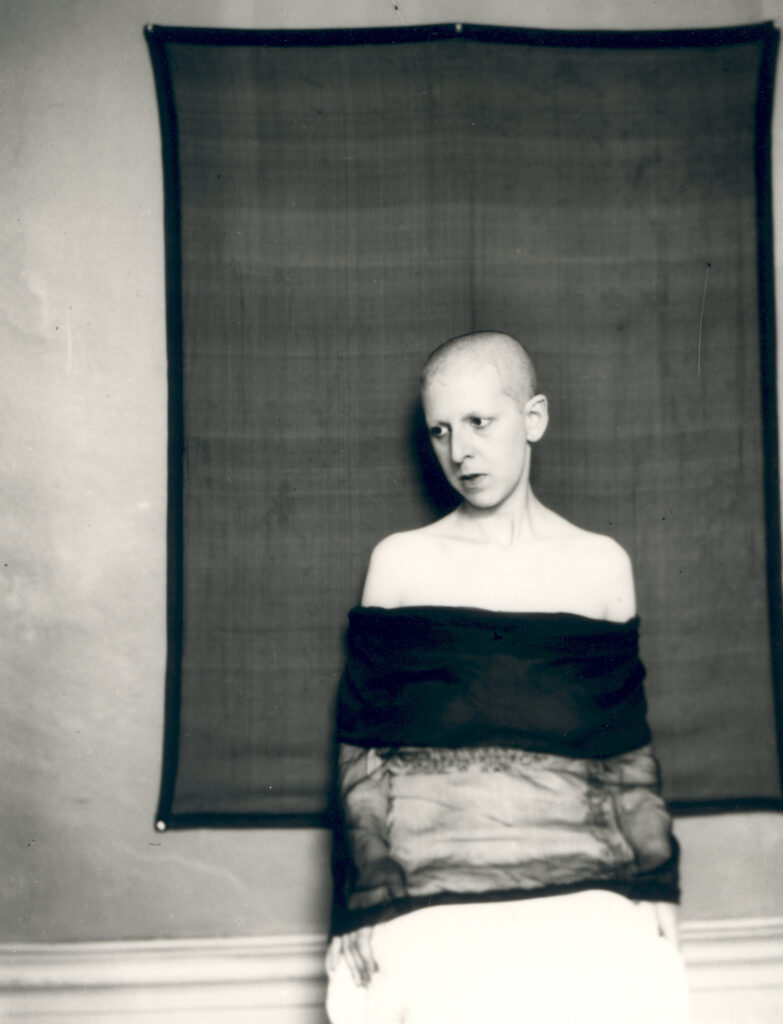

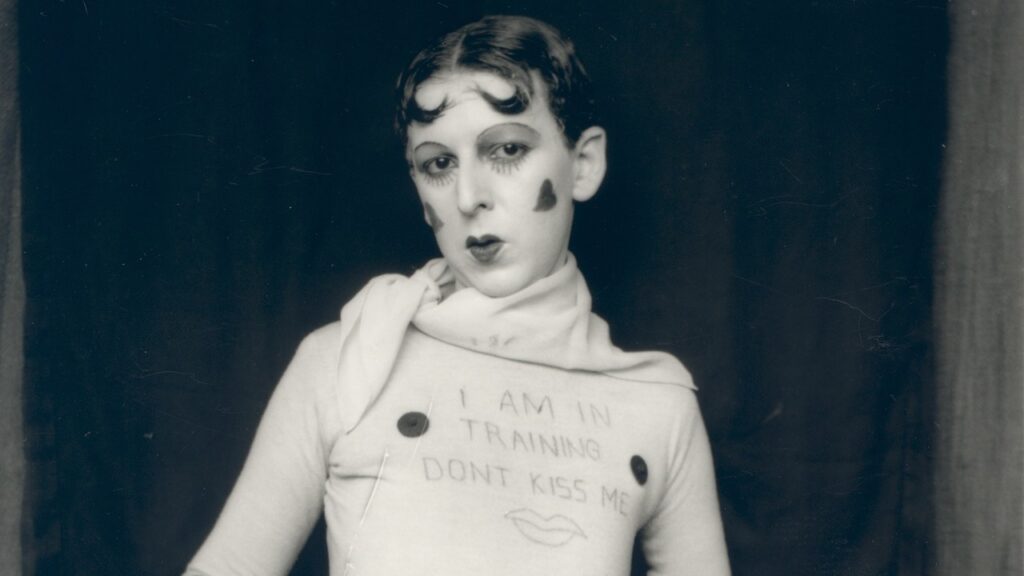
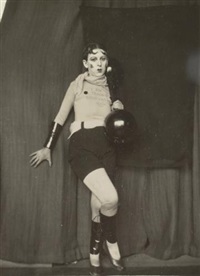
Her name was Lucy Schwob, born in 1984, Nantes France to wealthy Jewish Parents. She has a close connection to Jersey as she would regularly visit there during her holidays. Cahun then moved to Jersey in 1937, and found her passion for art as she began to experiment with radical styles and ideas. For example she refused to conform to gender normality, so she adopted a masculine appearance and used gender neutral pronouns to assert her own identity. This was also explored throughout her artwork and photography.
Her work she produced first, started to show an interest in surrealism, as she quickly became a part of an artistic community in Jersey. She started to produce a series of photomontages and photographs that challenges traditional ideas of gender, sexuality and identity.
Others would describe Claude Cahuns work as daring and provocative as it was greatly attracted by the Surrealist movement in Paris. This was thought as she explored a variety of guises, exploring a variety of different personas and identity. This provoked the viewers in ways which it challenges their assumptions on gender and identity, as it is not clear whether she is dressed man or woman.
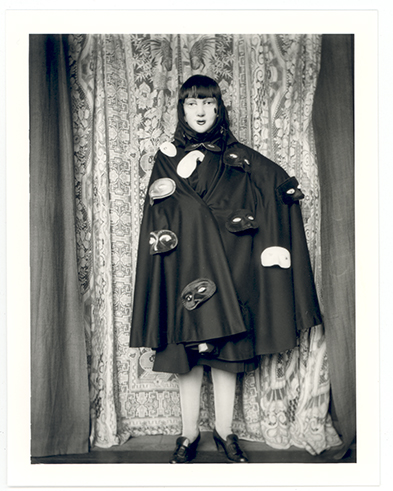
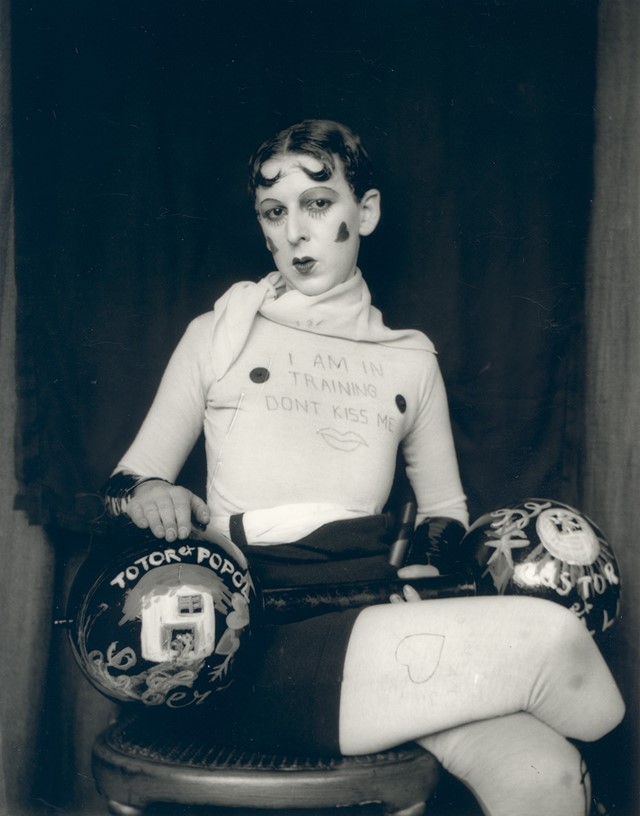
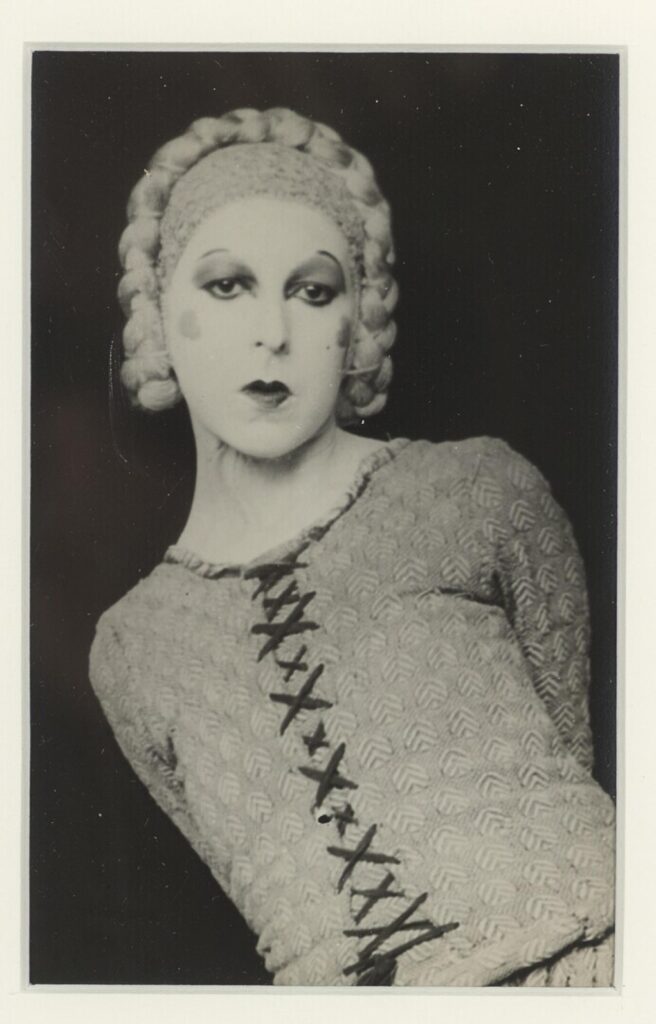
Cahun’s most iconic work was produced in 1920s-1930s where she created a series of self portraits using herself. She presented herself in a variety of poses, exploring themes of gender fluidity and identity. She dresses as both male and female, bus also a genderless figure – this was done to challenge the viewers assumptions about gender identity.
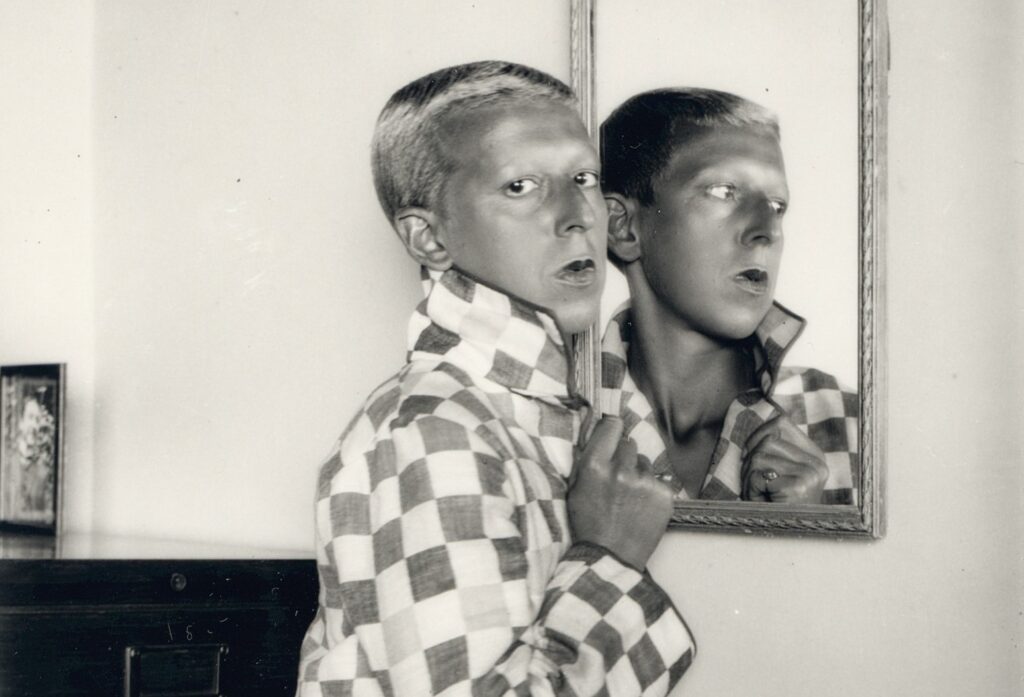
“Under this mask, another Mask.”
I think what makes this photo interesting and engaging for the viewer is how Claude Cahun is posing into the mirror but looking away. It makes us as the viewer intrigued, as it draws you in creating the main focus points. We first see her in the portrait but then our attention is shifted to the portrait created in the mirror which gives this other very interesting and engaging focus point – this makes us look closer into the portrait. I think the choice of clothes and style Claude Cahun uses in this photo and in general gives the viewer this interesting perception of the photo making us think differently about her identity.
This self portrait from 1928 of Claude Cahun explains her attitude and style, as she stares directly into the camera, and dresses up as a neither masculine or feminine characters. I think Claude Cahun creates a really interesting concept about the portrait, because she engages the viewer in ways that challenges our own judgement of the gender identity.
It is interesting because when we see a portrait of something we can’t identify straight away, it makes us look closer. The way she dresses and poses, and also how we see the character, such as how we see her reflection in the mirror, makes the portrait very engaging, as we create our own judgement on the portrait.
I think this portrait of Claude Cahun is very interesting. Cluade Cahun experiments with identity expressing this with what she wears for example, the chequered jacket creates an interesting focal point. We get this impression that it is neither masculine or feminine as not only what she is dressed in gives us different assumptions but normally we would depict light and softer tones such as white or light grey to be more feminine, and the darker tones to be more masculine. This portrait makes the viewer question the identity of the subject, as Cahun doesn’t make it obvious whether it’s male or female, this is a way of her making engaged with the portrait as she wants you to work it out yourself. The quote ‘under this mask, another mask,’ is what Cahun uses to describe her photography. Claude Cahun communicates this as she creates two portraits of her. The first shows the mask, and the portrait in the mirror shows what’s beneath the mask.



















